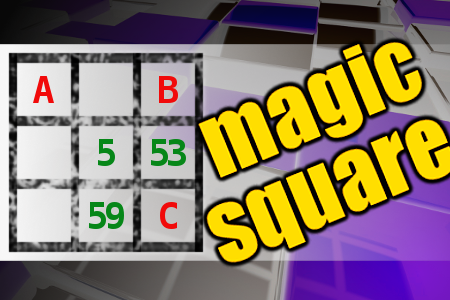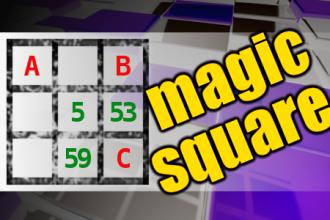MAGIC SQUARE: Calculate A-B+C
The aim is to place the some numbers from the list (4, 5, 6, 10, 13, 14, 19, 53, 54, 59, 81, 92) into the empty squares and squares marked with A, B an C. Sum of each row and column should be equal. All the numbers of the magic square must be different. Find values for A, B, and C. Solution is A-B+C.Correct answers: 47
The first user who solved this task is Miloš Mitić.
#brainteasers #math #magicsquare

Why Eve Was Created
Top Ten Reasons Eve Was Created
10. God was worried that Adam would frequently become lost in the garden because he would not ask for directions.
9. God knew that one day Adam would require someone to locate and hand him the remote.
8. God knew Adam would never go out and buy himself a new fig leaf when his wore out and would therefore need Eve to buy one for him.
7. God knew Adam would never be able to make a doctor's, dentist, or haircut appointment for himself.
6. God knew Adam would never remember which night to put the garbage on the curb.
5. God knew if the world was to be populated, men would never be able to handle the pain and discomfort of childbearing.
4. As the Keeper of the Garden, Adam would never remember where he left his tools.
3. Apparently, Adam needed someone to blame his troubles on when God caught him hiding in the garden.
2. As the Bible says, It is not good for man to be alone!
And the #1 reason why God created Eve...
1. When God finished the creation of Adam, He stepped back, scratched his head, and said, "I can do better than that!"
10. God was worried that Adam would frequently become lost in the garden because he would not ask for directions.
9. God knew that one day Adam would require someone to locate and hand him the remote.
8. God knew Adam would never go out and buy himself a new fig leaf when his wore out and would therefore need Eve to buy one for him.
7. God knew Adam would never be able to make a doctor's, dentist, or haircut appointment for himself.
6. God knew Adam would never remember which night to put the garbage on the curb.
5. God knew if the world was to be populated, men would never be able to handle the pain and discomfort of childbearing.
4. As the Keeper of the Garden, Adam would never remember where he left his tools.
3. Apparently, Adam needed someone to blame his troubles on when God caught him hiding in the garden.
2. As the Bible says, It is not good for man to be alone!
And the #1 reason why God created Eve...
1. When God finished the creation of Adam, He stepped back, scratched his head, and said, "I can do better than that!"

